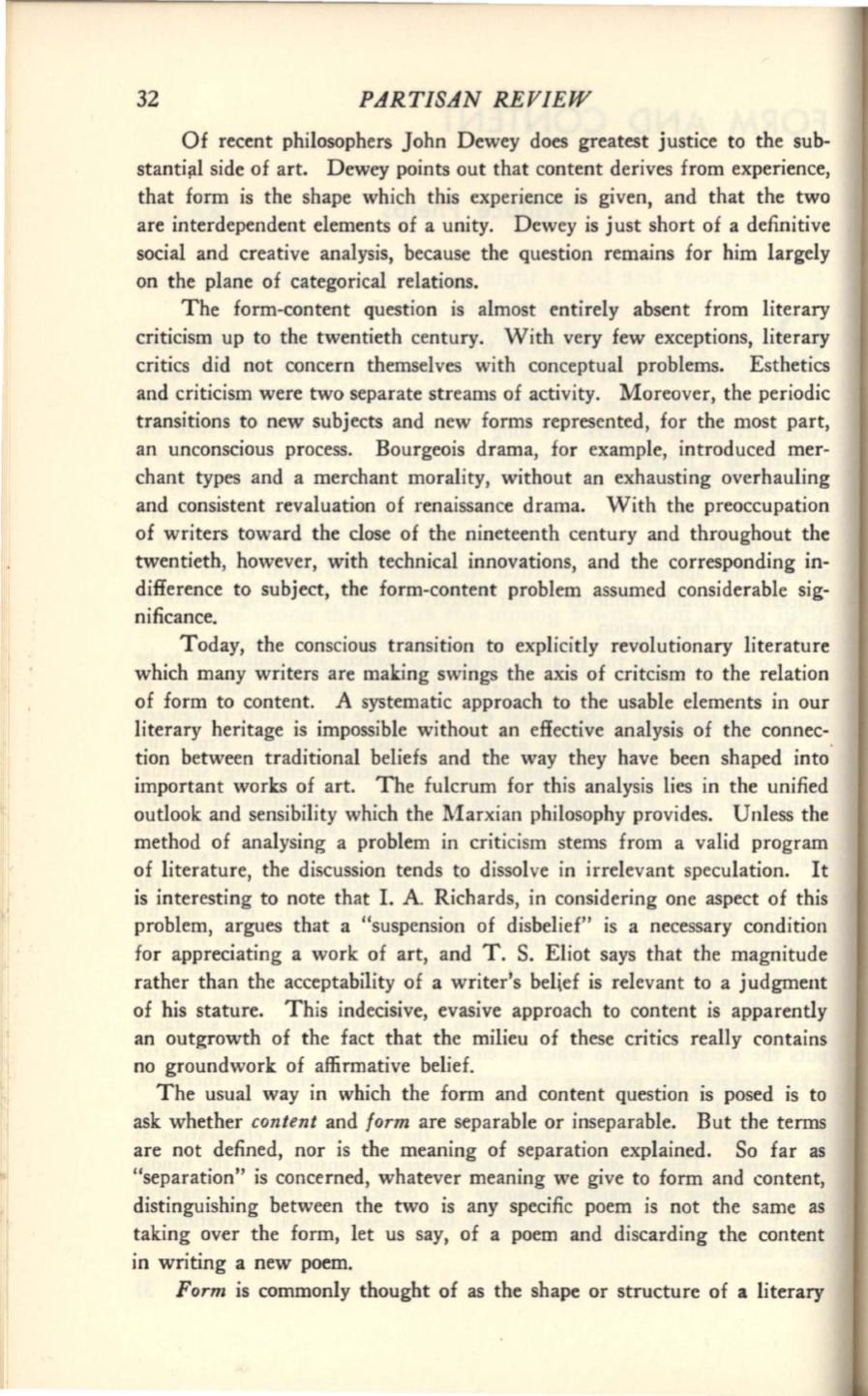
32
PARTISAN REVIEW
Of recent philosophers John Dewey does greatest justice to the sub–
stantiiil side of art. Dewey points out that content derives from experience,
that form is the shape which this experience is given, and that the two
are interdependent elements of a unity. Dewey is just short of a definitive
social and creative analysis, because the question remains for him largely
on the plane of categorical relations.
The form-content question is almost entirely absent from literary
criticism up to the twentieth century. With very few exceptions, literary
critics did not concern themselves with conceptual problems. Esthetics
and criticism were two separate streams of activity. Moreover, the periodic
transitions to new subjects and new forms represented, for the most part,
an unconscious process. Bourgeois drama, for example, introduced mer–
chant types and a merchant morality, without an exhausting overhauling
and consistent revaluation of renaissance drama. With the preoccupation
of writers toward the close of the nineteenth century and throughout the
twentieth, however, with technical innovations, and the corresponding in–
difference to subject, the form-content problem assumed considerable sig–
nificance.
Today, the conscious transition to explicitly revolutionary literature
which many writers are
ma~ing
swings the axis of critcism to the relation
of form to content. A systematic approach to the usable elements in our
literary heritage is impossible without an effective analysis of the connec–
tion between traditional beliefs and the way they have been shaped into
important works of art. The fulcrum for this analysis lies in the unified
outlook and sensibility which the Marxian philosophy provides. Unless the
method of analysing a problem in criticism stems from a valid program
of literature, the discussion tends t.o dissolve in irrelevant speculation. It
is interesting to note that
I.
A
Richards, in considering one aspect of this
problem, argues that a "suspension of disbelief" is a necessary condition
for appreciating a work of art, and T. S. Eliot says that the magnitude
rather than the acceptability of a writer;s belief is relevant to a judgment
of his stature. This indecisive, evasive approach to content is apparently
an outgrowth of the fact that the milieu of these critics really contains
no
groundwor~
of affirmative belief.
The usual way in which the form and content question is posed is to
ask whether
content
and
form
are separable or inseparable. But the terms
are not defined, nor is the meaning of separation explained. So far as
"separation" is concerned, whatever meaning we give to form and content,
distinguishing between the two is any specific poem is not the same as
taking over the form, let us say, of a poem and discarding the content
in writing a new poem.
Form
is commonly thought of as the shape or structure of a literary


